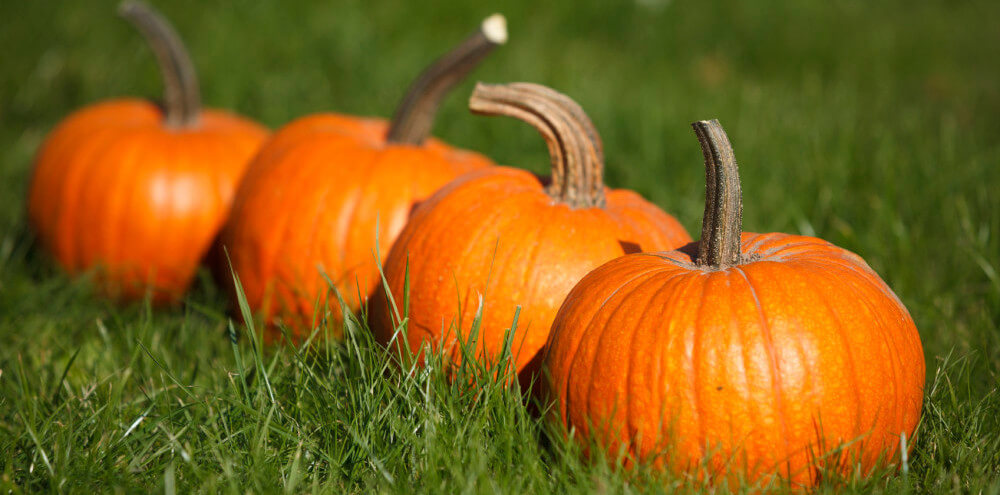Nothing says autumn quite like a dark green lawn covered in vibrant orange and yellow leaves. Cool fall nights and the still warm soil transform your normally fast growing lawn into one that is focused on storing energy in its root system. This special phenomenon is a unique time of year with many advantages when it comes to seeding, fertilizing, aerating, liming and winterizing your lawn.
Whether you have a home lawn or one at your business, October is no trick when it comes to setting up your lawn for better survival over the winter. And the treat for any lawn treatment in October means a greener, healthier lawn next spring, if done correctly. October lawn care treatments done before soil temperatures drop to a level where your lawn is going into hibernation are of particular benefit. Seeding and fertilizations of any kind are more sensitive to warmer soils for maximum results in the fall.
Seeding
Seeding bare patches in your lawn or over seeding new grass into a thin or existing lawn are great ways to really speed up the thickening process now to set the stage for next year. Any grass you gain now by seeding can be treated for crabgrass next spring, allowing for a better lawn in 2015. If you wait until spring to seed, the cold soil prevents early seeding well into May, thus competing with annual weeds and crabgrass; a recipe for disaster.
Fertilizing
Natural and organic fertilizers also work best in warmer soils when micro-organisms are growing and can help breakdown the material into a useable form for your turf grass. By contrast, synthetic fertilizers are already in a more useable form and can be used later into the season as soils cool down. The cautionary note of using fertilizers too late in the season if the ground is frozen or very cold means not really achieving any benefit to the lawn and the possibility of runoff into streams, rivers, and other undesirable areas.
Aeration and Lime
Core aeration on the other hand can be done right up until the ground freezes or is at the very least very cold in November or early December, depending upon your actual location in New England. Of course, if you plan to over seed after aerating, earlier is better for germination and subsequent growth before snow falls. Lime can also be applied well into late fall, with the full benefits achieved in spring relating to pH or general soil conditioning.
Winterizing
One last tip, remove piles of leaves on your lawn, especially on thin, shaded, or new grass areas, as they will act as mulch and damage your lawn. As the temperature drops and November approaches, you can actually drop your mowing height down to 2”. Your final cut in November should be 1.5” to help minimize winter damage and snow mold.

October Lawn Tips
Tags:
aeration
, chippers
, Fertilizer
, lawn companies
, Lime
, concord lawn care
, seeding
, upper valley lawn care
, bow lawn care

